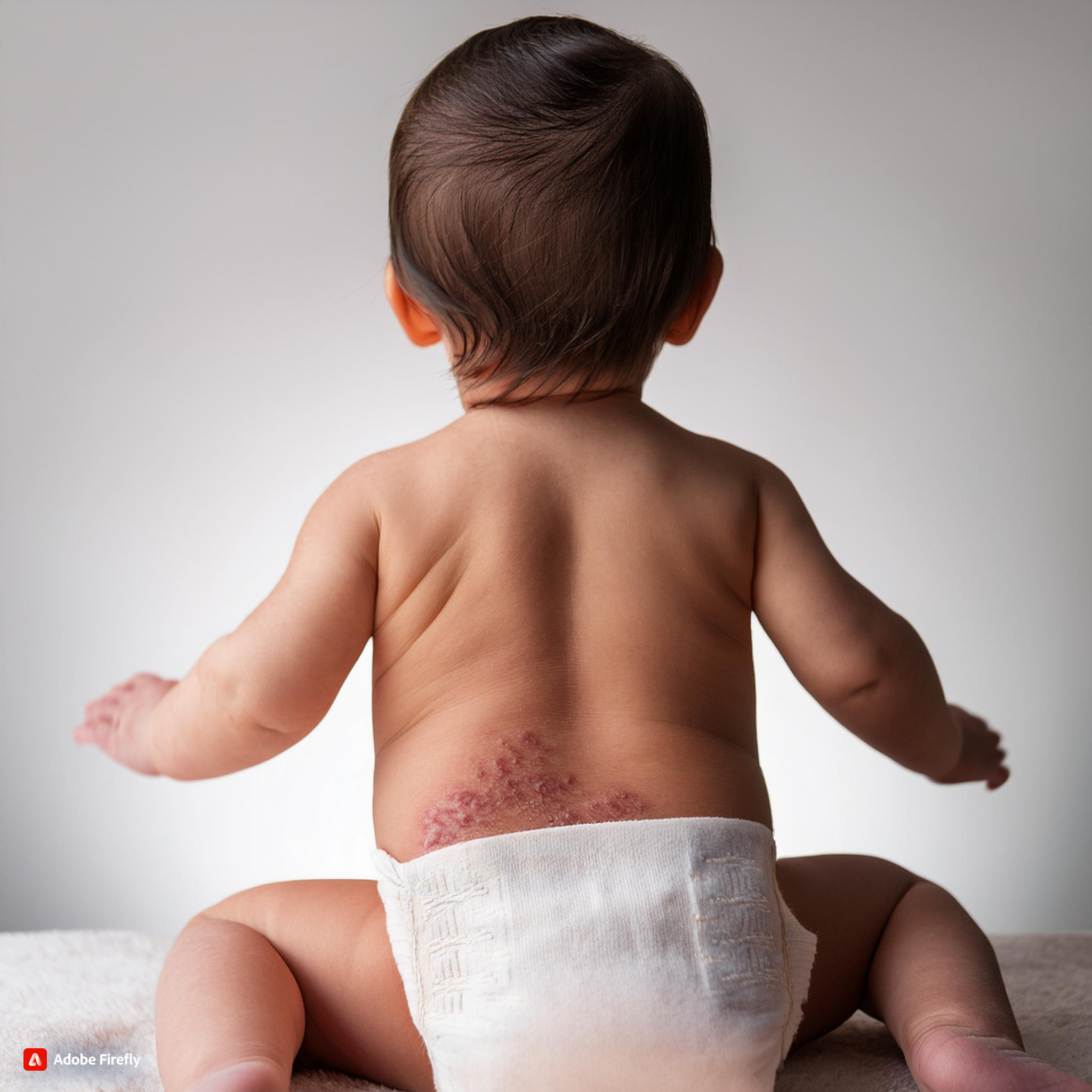Being a mother for the first time means getting acquainted with brand new concepts such as burping, increasing breast milk, finding solutions to the baby’s diaper rash problem. The first three months after birth are a period of adjustment for both mother and baby. One of the situations faced by the mother in this process is the baby’s diaper rash. So, what causes diaper rash in babies and how to remove it? Before answering this question, let’s answer the question “what is diaper rash“.
What is diaper rash in babies?
Sensitivity of the baby’s skin, constantly wet diapers and unventilated skin come together to cause a lesion called diaper rash. Diaper rash is a reaction of the skin to being constantly wet and airless. The appearance of this reaction on the skin can be in the form of blisters, redness or even wounds. Before the onset of diaper rash in babies, there is a slight redness. Regional redness turns into blisters after a while. When you notice the rash, you can prevent the condition from progressing by leaving the baby’s diaper open for a while, keeping it clean and dry, and applying diaper rash cream regularly.
The sensitivity of the baby’s skin causes pain and discomfort. Let’s also explain why diaper rash occurs.
What causes diaper rash in babies?
Themost important cause of diaper rash is wet sensitive skin. The fact that the materials used in the production of diapers are not skin-friendly can also trigger diaper rash. Therefore, diaper selection is very important, especially during the first 6 months. On the other hand, the diaper should be changed frequently and the baby’s diaper should not be kept wet. This is because diaper rash can occur on a baby’s bottom that remains wet for only one hour.
Diaper rash is caused by a combination of sweat, urine and lack of air. On the other hand, bathing the baby frequently and cleaning the bottom from bacteria is also an important detail in this regard. This is because bacteria multiply in a wet, airless environment and accelerate the lesion. The diet, in other words the food the baby takes, can also sometimes cause diaper rash.
How to relieve diaper rash in babies?
For the treatment of diaper rash, especially in advanced cases, it is necessary to consult a physician. The treatment and prescription given by the physician is essential. On the other hand, it may be useful not to diaper the baby for a while, to leave the diaper open on a sheet or clean diaper and to allow the skin to breathe. If the environment is warm enough after pooping, washing the baby’s bottom and drying it thoroughly also prevents the movement of bacteria in the area and relieves the baby. If the weather conditions are favorable, leaving the baby’s bottom uncovered and sunbathing for a while can also provide relief. It is also important to look at the ingredients of the materials you use to wipe the baby’s bottom, such as baby cleaning and care wipes and diapers. Substances that irritate the already sensitive tissue can increase the pain in this process.
In summary, keeping the baby’s bottom dry, clean and applying a soothing diaper rash cream can be useful to relieve diaper rash. In advanced cases, apply diaper rash cream on the advice of a doctor.
Diaper rash cream recommendation for baby
Many mothers will give you different advice about baby diaper rash cream. Some may even recommend creams made for adult use, olive oil and other herbal mixtures. It is important to consult your doctor before choosing a diaper rash cream for your baby. Because the baby may have a special skin sensitivity. When looking for diaper rash cream advice, it is also important to read the ingredients of the products and see if they are suitable for the baby’s age. Traditional diaper rash preventatives such as extra virgin olive oil and linden tea, even if they are useful, will not stay on the skin because they need to be cleaned afterwards and therefore their effects will not be sufficient. When diaper rash cream mixtures are prepared in laboratories, they are formulated in such a way that they are not allowed to remain on the skin. This allows the skin to absorb the products and protect itself from diaper rash.

